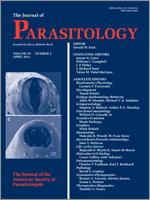Two new species of Monogenoidea were found parasitizing the cephalic lateral line canals of Percichthys trucha (Valenciennes) (Perciformes: Percichthyidae). These species are described as members of a newly proposed genus of Dactylogyridae. Cryptocephalum n. gen. is characterized by the site of infection and the combination of the several features: ventral and dorsal anchor/bar complexes, anchors with strongly elongated shaft and recurved point, shaft and point of dorsal anchors protruding laterally from haptor, hooks with 2 subunits and with pair 5 smaller than the others; gonads overlapping; coiled male copulatory organ with counterclockwise rings, accessory piece formed by 2 distinct parts, and a tubular, sclerotized ventral vagina. Cryptocephalum petreum n. sp. is characterized by having both anchor pairs protruding laterally from haptor, male copulatory organ with a coil of 2-1/2 rings, accessory piece tweezers-shaped, and sclerotized vaginal vestibule. Cryptocephalum spiralis n. sp. has ventral anchors protruding ventrally and dorsal ones protruding laterally, male copulatory organ with a coil of 1-1/2 rings, the antero-dorsal part of the accessory piece saddle-shaped, vaginal vestibule not present, and coiled vagina. This is the first record of Dactylogyridae species parasitizing the cephalic lateral line of fishes.
How to translate text using browser tools
1 April 2011
Two New Species of Cryptocephalum n. gen. (Monogenoidea: Dactylogyridae) from the Cephalic Lateral Line of Percichthys trucha (Perciformes: Percichthyidae) in Patagonia, Argentina
Rocío M. Vega,
Gustavo P. Viozzi,
Norma L. Brugni
ACCESS THE FULL ARTICLE

Journal of Parasitology
Vol. 97 • No. 2
April 2011
Vol. 97 • No. 2
April 2011




